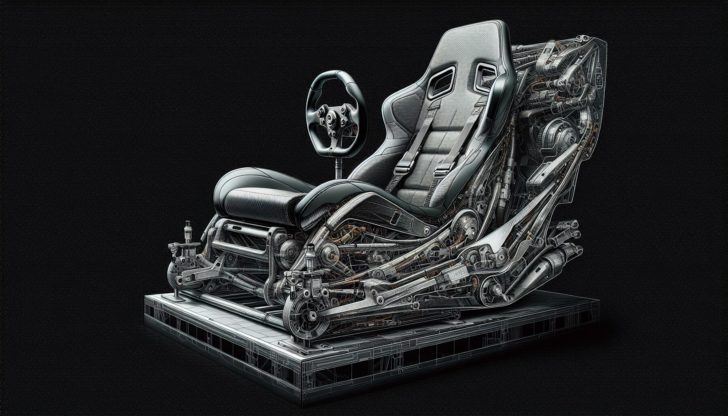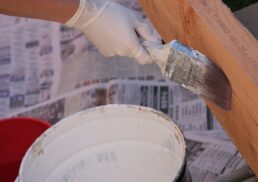Selecting a race seat is about finding the sweet spot between comfort and control. If you’re sifting through options, our guide simplifies the process. It steers you through safety, design, materials, and the all-important fit to enhance your driving experience. Expect no fluff; just practical advice to steer your choice in an industry filled with options.
Table of Contents
Key Takeaways
Racing seats are designed for safety and performance, featuring full containment, ergonomic support, and must meet safety standards set by organizations like F.I.A. or SFI.
Advanced materials and technology in racing seats contribute to comfort, impact resistance, and haptic feedback, and proper mounting is crucial for peak performance.
Choosing the right seat involves considering the type of racing, vehicle compatibility, budget, and additional features like seat adjustability, and conducting thorough research on brand reputations and reviews is essential.
The Essentials of Racing Seats

Racing seats differ from standard commuter vehicle seats due to their design that emphasizes safety and support, specifically tailored to withstand high-speed and extreme force conditions of the track. They are built to withstand the rigors of track use, offering stronger resistance and durability, especially during high-impact situations.
Leading manufacturers, like ButlerBuilt, design seats with full containment around the ribs, ensuring a snug fit for optimal performance and protection.
Safety First: Understanding Racing Seat Standards
Racing seats are not merely aesthetic; their primary design purpose is your protection. They must comply with specific safety standards and certifications to ensure optimal protection for drivers on the track. If you’re considering buying a racing seat, confirm its certification by reputable organizations like F.I.A. or SFI.
These seats undergo extensive testing and inspection, meeting rigorous standards for impact resistance, flame retardancy, and material quality. Manufacturers with FIA certification establish a reputation of trust and safety within the motorsport industry.
The Role of Ergonomics in Racing Seats
While racing is both intense and thrilling, it can also be physically taxing. Ergonomics are key in addressing this challenge. Ergonomically designed racing seats:
Support the driver’s body, reducing fatigue over extended periods
Fit perfectly within the confined space of a race car’s interior
Boost driver comfort, which can significantly enhance performance during a race.
Offroad racing seats even allow customization of foam types and layers, tailoring them to the needs of the race and the driver.
Materials Matter: What Goes into a Racing Seat
Racing seats are more than mere foam and upholstery. They incorporate a complex mix of materials including:
Carbon fiber, favored for its lightweight and strength
Kevlar, which adds toughness, enhancing safety and performance
Synthetic suede (escanine or alcantara)
Metal frames
These materials work together to create high-performance racing seats.
Synthetic suede provides a tactile grip and upscale aesthetic, ensuring driver comfort. Metal frames offer increased resilience and safety, preferred by drivers seeking sturdier options.
Planted Technology and Seat Innovation

Racing seats serve as more than a mere seating area; they form a critical link between the driver and the car. With planted technology, racing seats enhance seat stability and driver feedback from the vehicle. They provide essential information about the car’s performance, allowing drivers to make split-second decisions on the track.
Cutting-Edge Features in Today’s Racing Seats
Racing seats have seen significant advancements in recent years. Today’s racing seats are equipped with innovative technologies like haptic feedback and advanced seat padding actuators, enhancing the driving experience. Custom F1 seats created using biomechanics and digital modeling of a driver’s physique represent significant advancements in seat ergonomics.
Furthermore, they now commonly accommodate 5-point and sometimes 6-point safety harnesses, providing versatility for different racing safety protocols. These cutting-edge features contribute to better situational awareness for the driver, improved performance, and flexibility for various racing events.
The Importance of Proper Mounting
Securely mounting racing seats is imperative for optimum performance. Planted Technology seat brackets facilitate this process, ensuring seat stability and compatibility with sliders from major manufacturers. The steel construction of these brackets prevents bending or warping under extreme conditions.
Proper mounting allows drivers to fully experience the enhanced tactile feedback from these new seat technologies, vital for racing performance. Correct fitting involves accurate measurements of the vehicle’s interior and the driver, ensuring maximum control and comfort.
Choosing the Right Seat for Your Track Experience

Selecting the appropriate racing seat can greatly improve your track experience. Whether engaging in slalom, autocross, drift, time trial, or off-road race, the right seat can provide the necessary support and protection you need. If you’re an entry-level racer at slower speeds, you may opt for less protection, but if you’re in faster vehicles like sprint cars, full containment seats might be a better fit. However, keep in mind that higher containment usually comes with a higher price tag.
Seeking advice from online racing forums and knowledgeable dealers can provide valuable insights on different racing seats’ performance in specific applications.
Circuit Racing vs. Offroad: Seat Considerations
Different racing types demand different seat requirements. For instance, the lightweight construction of seats like the Pyrotect Pro Elite Carbon Fiber Racing Seat contributes to reducing the overall weight of the race car, improving speed and handling in circuit racing.
On the other hand, for off-road racing, suspension seats are often preferred over poly seats, as they offer better comfort during rough rides.
Customization Options for the Perfect Fit
For the perfect fit, consider custom racing seats. They can be tailored to individual driver measurements, offering a precise fit, especially beneficial for taller or heavier drivers. Adjustable features like the headrest and backrest contribute to a driver’s comfort and control. For drivers with unique physical requirements, tailored customization services are available.
However, the production process for custom race seats can involve multiple iterations to achieve a comfortable fit, which may result in considerable costs and production time.
Performance and Comfort: Achieving the Balance

In the world of racing, performance is intertwined with comfort. Racing seats must provide the right balance of support and comfort to allow drivers to sit for extended periods with minimal fatigue. Features like high-density foam padding, side bolsters, and headrests enhance driver comfort and support. However, finding the balance between comfort and performance requires the seat to fit well within the vehicle’s constraints.
The Impact of Seat Design on Driver Endurance
The design of a racing seat greatly influences driver endurance. Ergo, seats must be both ergonomically and orthopedically designed to sustain correct posture and minimize strain during long-duration races.
A well-designed seat can significantly reduce driver fatigue, enabling them to maintain higher performance levels throughout the race.
Adjustability for Optimal Driving Position
Adjustability is another crucial aspect of racing seats. The ability to adjust the seat height and reclining angle can greatly enhance driver comfort and safety. A lower seat height can lower the vehicle’s center of gravity while maintaining clear road visibility for the driver.
Similarly, reclining the seat at an appropriate angle can increase safety during impacts.
Common Questions About Racing Seats
You have questions, and we have the answers. As you delve into the world of racing seats, you may come across several questions about maintenance and compatibility.
Let’s address some of the most common inquiries to ensure you make the best choice for your racing experience.
How to Maintain Your Racing Seat
Regular maintenance of your racing seat is key to preserving its quality and comfort. Regular cleaning can go a long way in keeping your seat in top condition. Here are some tips for cleaning and maintaining your racing seat:
Vacuum them regularly to remove dust.
Use warm water with mild soap for minor spills.
For cleaning vinyl or leather racing seats, use an automotive grade leather cleaner or glass cleaner.
Apply a protective spray like scotchgard before installing to help prevent stains.
For major stains, consult a professional upholsterer.
Remember, to reduce wear on seats with higher bolsters, use a technique of going up and over rather than sliding across them.
Compatibility with Vehicle Makes and Models
It’s vital to verify compatibility with your particular vehicle make and model when purchasing a racing seat. Compatibility affects both the safety and comfort of the driver, as well as the ease of seat installation. Challenges can include mounting point locations, seat sizing, and the integration of vehicle electronics with new seat features.
Seek advice from manufacturers, specialized forums, or aftermarket accessory databases for information on seat compatibility with your vehicle make and model.
Making the Purchase: What to Know Before You Buy
Eager to buy your racing seat? Not so fast! Several factors need consideration before you finalize your purchase. Evaluate your budget as prices can vary significantly depending on materials, brand, and features. Investigate the reputation and history of quality within brands.
Also, review the return policy and satisfaction guarantees, as you may need to return or exchange the seat if it does not fit your body or car properly.
Assessing Your Budget and Needs
Evaluating your budget and needs is a vital step towards purchasing your racing seat. Here’s how to do it:
Start by evaluating the financial resources you’re willing to allocate towards your purchase.
Identify the features that you deem necessary for your racing experience.
Prioritize these features based on their importance to your driving performance and comfort.
Achieve a balance between cost and desired seat features by making informed compromises that don’t significantly impact your racing experience.
Researching Brands and Reviews
Before buying, do your homework! Researching racing seat brands and reading trustworthy reviews can provide valuable insights. Look for a consensus among various customer reviews to provide a reliable overview of a racing seat’s quality.
This can help you make an informed decision and avoid potential pitfalls in the market.
Aftercare and Support
The journey doesn’t conclude with the purchase of your racing seat. Most manufacturers offer aftercare services like warranty coverage, which may include both material and workmanship repair or replacement. They often demonstrate a high level of customer care, reaching out multiple times to ensure you receive the necessary assistance and support for your purchases.
Warranty and Repair Services
A solid warranty acts as a safety net for your purchase. Typical racing seat warranties include coverage for material or workmanship defects for several years, starting from the original purchase date. Some even offer extended warranty coverage for specific components. However, warranty terms generally exclude normal wear and tear, misuse, and issues arising from not following the product’s maintenance instructions.
Also, modifications made without approval or using the seats for commercial purposes can void the warranty coverage.
Customer Support: Questions and Email Assistance
Quality customer support can significantly impact your purchasing experience. Most racing seat manufacturers provide customer support through email and phone, including dedicated contacts for specific retail platforms. When initiating warranty service, be sure to provide your full name, address, order number, and issue details. Manufacturers typically address issues like defective parts by promptly providing replacement components.
Customers report quick and helpful responses to inquiries and support issues, highlighting the efficacy of customer service in the racing seat industry.
Summary
From understanding the essentials of racing seats to making the right purchase, we’ve covered a lot of ground. We’ve learned that racing seats are not just about support and comfort, but also about safety and performance. They come with cutting-edge features and innovative technology, designed to enhance your racing experience. While the journey to finding the perfect racing seat may seem daunting, it’s an investment that pays off on the track, in terms of both performance and comfort. So buckle up, it’s time to race!
Frequently Asked Questions
What is the importance of racing seat certification?
Racing seat certification is important because it guarantees that the seat meets strict safety standards, ensuring your protection on the track. Certified seats undergo thorough testing and inspection, giving you peace of mind about their safety and quality.
How does ergonomic design enhance driver comfort and performance?
Ergonomic design enhances driver comfort and performance by providing support to the body, reducing fatigue, and ultimately improving race performance.
What are the different seat requirements for circuit racing and off-road racing?
In circuit racing, lightweight seats are preferred to reduce the overall car weight, while off-road racing often opts for suspension seats to ensure better comfort during rough rides. Choose your seat type based on the specific demands of your racing style.
How can I maintain my racing seat?
To maintain your racing seat, vacuum it regularly to remove dust and use warm water with mild soap for minor spills. For vinyl or leather seats, use an automotive grade leather cleaner or glass cleaner and apply a protective spray before installing to prevent stains. If there are major stains, consult a professional upholsterer.
What should I consider before purchasing a racing seat?
Before purchasing a racing seat, consider your budget, research reputable brands with a history of quality, and review return policies and satisfaction guarantees to make an informed decision. Focus on prioritizing features that are essential for your racing experience.









